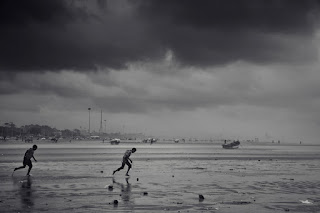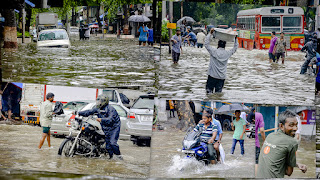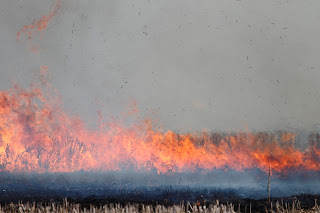Story Behind The New Tehri Town : The Third Tallest Rockfill TEHRI DAM: The Power House of Uttarakhand: Rehabilitation Measures
The Himalayas consist of the most sensitive terrains in terms of ecology and the youngest organic belts impacted by various environmental hazards, like landslides and flash floods. The Uttarakhand disaster in 2013 caused damage to various hydropower projects in the area with a heavy toll of fatalities. Until the 1970s, there was no potential invention that can harness hydropower from Himalayan River valleys. After the 1980s, commercial forest cutting was stopped which helps to decrease the rate of deforestation and flash floods. But there is a progressive concern of extremely susceptible global warming as suggested by the Intergovernmental Panel on Climate Change (IPCC). The report indicated an estimated increase of 1-1.5 degrees Celsius rise in temperature due to human activities which will cause damage to ecosystem health and the increased intensity of irreversible extreme weather events in upcoming years. In these circumstances, scientists and researchers must focus on glacier-fed rivers in the Himalayas.
History of Tehri Dam
The dam project was proposed to Govt of India in 1969, but the project was
approved in June 1972 as a State project implementation by Govt. of Uttar
Pradesh. Subsequently, the project was revised in the year 1983 for the generation
of 1000 MW of electricity instead of 600 MW. Finally, in July 1988 the Tehri
Hydro Development Corporation (THDC) was set up as a joint venture of the Government
of Uttar Pradesh and Govt of India. The Tehri dam project work started in 1989
and the rehabilitation work started in 1990. The implementation of the dam project and
hydropower generation of 1000 MW was approved in 1994.
Construction overview of the “Rockfill Tehri Dam”
The Tehri dam project started in action visualizing the future
irrigation-power project across the Bhagirathi River. The 260.5 m high rockfill
dam stores 2,880,000 acre-ft of water for hydropower generation. The spillways
and diversion tunnels of 11 m in diameter were designed with a capacity 0f
11,700 cubic meters per second.
Problems Examined before the Construction
A set of alternative dam axes were analyzed for the dam. The initial dam
axis gave an excellent seating of the dam but the major fault of the design was
dealing with the core of the dam which might cause damage to the core structure
considering the steep valley slopes. The second axis design indicated heavy
overburden involving increased excavation loads and shifting the positions of
spillways. The third idea of the dam axis is also rejected and finally, the
fourth one was recommended, substituting the designs for the overburden and divergence
downstream.
To reduce the future transverse crack formation, the dam was given a
convexity in the curvature providing an arch in the body of the dam.
Phyllitic rocks were not suitable for the dam core body as high-water
pressure was expected. Grade I rock
obtained from the excavation was also rejected focusing on dam stability as it lies
in an active seismic zone of the country. Further research suggested using
blended materials of clay, silt, sand, gravel, and boulders which strengthen the
core and are resistant to leakage, erosion, and crack. The materials used in
the construction were obtained from river terraces with good drainage capacity.
A vertical clay core was proposed first and was modified later on with
both vertical and inclined cores with the presence of thickened sound rock to
make it more earthquake resistant.
Safeguard “Coffer Dam”
Following several exercises with various combinations, a safeguard dam was
constructed to counteract the frequency flood of 1 in 1000 years and the preceding
flood of 1 in 25 years with a freeboard of 2.7 m.
The seismic stability was studied considering earthquake-affecting parameters
for the site. The non-seismic analyses were carried out considering
conventional pseudo-static analysis. Several tests and estimations were done to
calculate non-recoverable deformities, numerical values of dynamic shear modulus
and damping coefficients as well as the excess pore pressure during an
earthquake. In addition, several finite element analyses along with two-dimensional
linear and non-linear analyses were carried out to check the signs of dam distress.
The directional blasting techniques were adopted to analyze the first stage
of dam construction in 1978. The technique was very risky due to the proximity of
the town near the site of the dam. In addition, the foundation problems were analyzed
considering seepage through foundation rocks, water pressure in abutments, and
removal of undesirable, weathered areas, local pockets, weak materials, joints,
and seams in the foundation of the dam structure.
Rehabilitation Plan, Execution, and Monitor
Due to the implementation of the massive Tehri dam project, both urban
and rural population have sacrificed their lands and homes. However, as per
govt database, 5429 families were considered fully affected and are
rehabilitated. Another 3810 families were being compensated for their land
submergence. Following the Rehabilitation policy, the rural affected people
were allotted agricultural lands and cash as compensation and were settled in
large blocks to maintain their social intactness. Community facilities were
also provided as a cost of the project cost.
To review the environment and rehabilitation and resettlement issues with
the Tehri Hydro Electric Project, a Project Level Monitoring Committee (PLMC) was
constructed by govt. of India. Ministry of Environment & Forests also
formed a High-Level Inter-Ministerial Review Committee (IMRC) which included the
Secretary of the Ministry of Power, the Secretary of the Ministry of Social
Justice, the Secretary of the Ministry of Water Resources, and also the Chief Secretary
of Uttaranchal and Uttar Pradesh.
On the demand of local people for further improvements, the Hanumantha Rao Committee (HRC) was constituted in 1996 and the additional benefits and measures were implemented in 1998. Following the recommendations of the committee, ex-gratia payments each of Rs. 33,000 which included 750 days of minimum agricultural wages, grant of house construction assistance, allotment of constructed shops, etc. were given to eligible residents in New Tehri Town.
After December 1998, various other improvements were followed with the recommendations
of HRC for both Rural and Urban populations. The cash enhancement was done for
land cost, house construction assistance, and increased cash grants for shifting
and purchase of seeds and fertilizers were provided. Along with the same, Govt organizations
have reconstructed and relocated the public properties, arranged Ferry boat and
cable car services for cut-off areas, heavy motor vehicle bridge was
constructed across the Bhagirathi River. In addition, the Land Acquisition Act
was implemented considering the liberalization of eligibility criteria for land
allotment. In continuation, the liberal rehabilitation package evolved into a Rural
package and an urban package with an improved framework and unchanged basic
features, which facilitates the beneficial and easy transition for people in
New Tehri Town. The improved facilities included shifting to a favorable place
as per their option as well as enhanced education, Hospital, Financial institutions,
District administration offices, Bus stands, religious places, and Local
Markets were accommodated.













